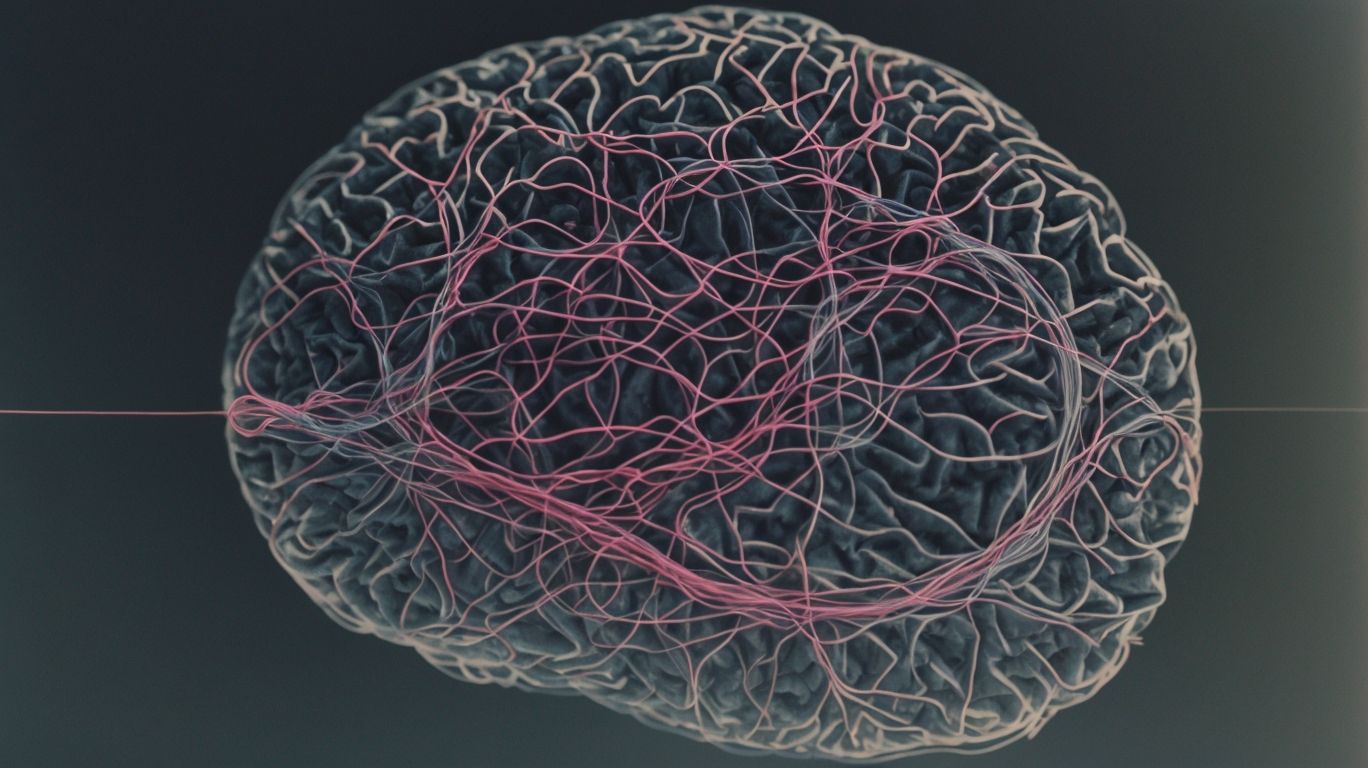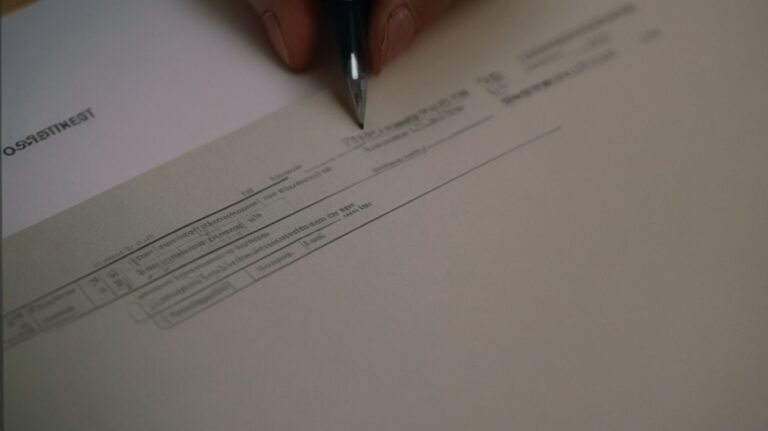Have you ever wondered about the concept of relearning in psychology and its importance?
Relearning is a powerful psychological process that can help individuals overcome trauma, improve memory and learning, facilitate behavior change, and enhance cognitive flexibility. In this article, we will explore what relearning is, how it works, the different types of relearning, and why it is crucial in psychology. We will also delve into the steps involved in the process of relearning and how it can be applied in therapy. If you want to gain a deeper understanding of relearning and its impact, keep reading!
Contents
- 1 Key Takeaways:
- 2 What Is Relearning in Psychology?
- 3 How Does Relearning Work?
- 4 What Are the Different Types of Relearning?
- 5 Why Is Relearning Important in Psychology?
- 6 What Are the Steps Involved in the Process of Relearning?
- 7 How Can Relearning Be Applied in Therapy?
- 8 Frequently Asked Questions
- 8.1 What is the process of relearning and why is it significant in psychology?
- 8.2 How does the process of relearning differ from the initial learning process?
- 8.3 What are the benefits of relearning for individuals?
- 8.4 Can the process of relearning be applied to all types of knowledge and skills?
- 8.5 How does the brain physically change during the process of relearning?
- 8.6 Is relearning always successful?
Key Takeaways:
- Relearning is a process of replacing old, maladaptive behaviors and thoughts with new, healthier ones in order to improve mental health and well-being.
- It is important in psychology as it helps overcome trauma, improves memory and learning, facilitates behavior change, and enhances cognitive flexibility.
- The steps involved in relearning include recognizing the need for change, identifying maladaptive thoughts and behaviors, challenging and replacing negative beliefs, and practicing and reinforcing new behaviors.
What Is Relearning in Psychology?
Relearning in psychology refers to the process of acquiring knowledge or skills that have been previously learned, forgotten, or lost, and then reacquired through repeated practice and exposure to the material.
This process plays a crucial role in cognitive psychology as it demonstrates the brain’s remarkable capability to retain and retrieve information.
When individuals engage in relearning, they not only refresh their memory of the original learning but also enhance their overall retention and understanding.
Relearning helps in strengthening neural pathways associated with the specific knowledge or skill, leading to a more robust memory trace.
This phenomenon is a key concept in the field of memory consolidation, where reexposure to information solidifies its storage in the long-term memory.
How Does Relearning Work?
Relearning operates through the activation of memory retrieval processes, where the brain utilizes cues or prompts to access stored information and reconstruct the previously learned material through a cognitive model of recognition and association.
Memory retrieval plays a crucial role in relearning as it involves the process of accessing and bringing forth information that has been previously encoded and stored in the brain.
When an individual engages in relearning, the cognitive model of recognition is activated, allowing the brain to recognize familiar cues and patterns associated with the stored information. These cues serve as triggers, aiding the individual in retrieving and reconstructing the material.
Through the process of association, the brain links the retrieved information with the existing knowledge framework, facilitating the relearning process.
What Are the Different Types of Relearning?
Relearning encompasses various types, including procedural relearning, which involves the acquisition of motor skills or tasks, conceptual relearning, which pertains to the understanding of abstract concepts or principles, and emotional relearning, which addresses the modification of emotional responses through repeated exposure and practice.
Procedural relearning often involves repetitive practice to regain proficiency in tasks such as playing a musical instrument or performing specific movements.
Conceptual relearning requires a deeper understanding of the underlying principles or theories, often achieved through study and analysis.
Emotional relearning focuses on reshaping one’s emotional responses through intentional exposure to triggering stimuli, helping individuals manage and cope with challenging emotions.
This multifaceted approach contributes to overall memory recognition and the lasting effects of relearning on cognitive function and emotional well-being.
Procedural Relearning
Procedural relearning involves the reinforcement of memory associated with motor skills or task performance through repetitive practice, leading to improved execution and retention of the learned activities.
This process taps into the concept of memory consolidation, where repeated engagement with a skill or task leads to the synaptic strengthening of neural pathways, enhancing the skill’s retention and automaticity.
By engaging in consistent practice, the individual not only refines their motor skills but also reinforces the underlying memory traces, facilitating smoother and more efficient task execution.
Procedural relearning plays a vital role in the realm of cognitive psychology, shedding light on the fundamental mechanisms of skill acquisition, retention, and the intricate interplay between memory and motor performance.
Conceptual Relearning
Conceptual relearning focuses on the assimilation and comprehension of abstract concepts or principles, involving the reconstruction of cognitive frameworks and associations to enhance recognition and understanding of the learned material.
Through this process, individuals engage in the deliberate reexamination and restructuring of their mental representations, aiming to internalize complex ideas with a deeper level of insight.
The recognition of abstract concepts often involves connecting them to real-life scenarios or tangible examples, facilitating a more profound grasp of their significance.
Cognitive psychology outlines how this relearning process not only consolidates knowledge but also promotes the flexible application of conceptual frameworks in diverse contexts, fostering adaptive thinking and problem-solving skills.
Emotional Relearning
Emotional relearning involves the modification of emotional responses and reactions through repeated exposure and practice, facilitating the recognition and reinterpretation of emotional stimuli to foster adaptive behavioral patterns.
Through this process, individuals can develop healthier coping mechanisms and better regulate their responses to emotional triggers.
By repeatedly exposing themselves to challenging situations or memories, they can gradually alter their associations and reduce the intensity of their emotional reactions.
With the help of therapeutic guidance, individuals can reframe negative thoughts and memories, leading to improved emotional regulation and overall well-being.
The rewiring of emotional responses through relearning can also contribute to the creation of new, more positive memory associations, thus altering the way the brain recognizes and processes similar emotional stimuli in the future.
Why Is Relearning Important in Psychology?
Relearning holds significant importance in psychology as it facilitates memory consolidation, promotes effective learning, and enhances retention, thereby contributing to the overall cognitive development and performance of students and individuals.
Through the process of relearning, individuals have the opportunity to reinforce and solidify their existing knowledge, as well as to correct any misconceptions or errors in their understanding.
This process not only aids in the retention of information, but also leads to a deeper and more nuanced comprehension of the subject matter.
In cognitive psychology, relearning is considered a powerful tool for memory enhancement and long-term learning, as it assists in the restructuring of neural connections and the strengthening of memory traces.
Helps Overcome Trauma
Relearning plays a pivotal role in helping individuals overcome trauma by facilitating the recognition and reinterpretation of traumatic memories, leading to adaptive cognitive and emotional responses that promote healing and resilience.
Through the process of relearning, individuals can gradually establish a new cognitive framework for understanding and integrating their traumatic experiences, enabling them to work through the associated emotions and ultimately achieve a sense of closure and restoration.
This therapeutic approach harnesses the plasticity of the brain, enabling individuals to reorganize their thought patterns and emotional responses, ultimately fostering a healthier psychological state.
Improves Memory and Learning
Relearning contributes to the improvement of memory retention, learning efficiency, and cognitive adaptability, providing students and individuals with enhanced cognitive resources and competencies for academic and personal development.
Engaging in the process of relearning not only reinforces existing neural pathways but also stimulates the creation of new connections in the brain, fostering a more robust and interconnected network of knowledge and skills.
Research has indicated that relearning can lead to more durable memory formation and retrieval, enabling individuals to recall information with greater accuracy and speed.
The act of revisiting and relearning concepts can deepen understanding and mastery, leading to improved performance in academic assessments and real-world problem-solving scenarios.
Facilitates Behavior Change
Relearning facilitates behavior change by promoting the modification and reinterpretation of cognitive associations and responses, leading to the adoption of adaptive and constructive behavioral patterns and habits.
When individuals engage in relearning, they actively rewire their brain’s neural pathways, enhancing their memory recognition and strengthening their ability to implement new, more effective responses to familiar stimuli.
In the realm of cognitive psychology, relearning is recognized as a key mechanism for fostering enduring behavior change. It allows individuals to challenge and update existing belief systems, biases, and automatic reactions.
Enhances Cognitive Flexibility
Relearning enhances cognitive flexibility by promoting the reevaluation and adaptation of cognitive structures, enabling individuals to engage in diverse perspectives and problem-solving strategies for versatile cognitive functioning.
Cognitive flexibility plays a crucial role in memory recognition, as the ability to relearn and adapt facilitates the revisiting and strengthening of neural connections associated with memory recall.
This process not only enhances information retention but also allows for the assimilation of new knowledge, contributing to a more dynamic and comprehensive understanding of various subjects.
In the realm of cognitive psychology, the impact of relearning on cognitive flexibility underscores the significance of flexible thinking and adaptive behavior in navigating challenges and complexities.
By honing cognitive flexibility through relearning, individuals are better equipped to approach tasks and problem-solving scenarios with agility and open-mindedness, fostering a more efficient and creative cognitive process.
What Are the Steps Involved in the Process of Relearning?
The process of relearning encompasses several essential steps, including recognizing the need for change, identifying maladaptive behaviors or thoughts, challenging and replacing negative beliefs, and practicing and reinforcing new behaviors to facilitate effective cognitive and behavioral adaptations.
As individuals embark on the journey of relearning, they first evaluate their current cognitive and behavioral patterns.
This introspective phase involves acknowledging the impact of their existing habits and perceptions on their overall well-being. Subsequently, through a process of self-reflection, they begin to pinpoint specific maladaptive thought patterns or behaviors that hinder their growth.
Once these maladaptive aspects are identified, individuals delve into the cognitive restructuring phase. During this stage, they engage in activities aimed at challenging prevailing negative beliefs and replacing them with positive, affirming thoughts.
This step is crucial in promoting neuroplasticity, allowing the brain to form new neural connections and rewire existing ones, which is fundamental in the relearning process.
Following the restructuring of cognitive patterns, the emphasis shifts to the behavioral aspect. Individuals actively engage in practicing and reinforcing new behaviors that align with their restructured cognitive framework.
This hands-on approach not only solidifies the newly formed perceptions and beliefs but also fosters a gradual transition towards adaptive behavioral responses.
Recognizing the Need for Change
Recognizing the need for change is the initial step in the process of relearning, involving the acknowledgment of existing cognitive or behavioral patterns that necessitate modification for adaptive and constructive adjustments.
When individuals become aware of the need for change, it sets the stage for embracing new perspectives, acquiring new skills, and adjusting behaviors to better align with their goals.
Embracing change in the context of relearning signifies a willingness to challenge ingrained habits and beliefs, fostering a more open and flexible mindset.
This recognition prompts individuals to engage in deliberate practice, seek new information, and explore alternative approaches to problem-solving.
Identifying Maladaptive Behavior or Thoughts
Identifying maladaptive behavior or thoughts involves the critical assessment and recognition of cognitive or behavioral patterns that hinder adaptive functioning, setting the stage for targeted cognitive and behavioral reevaluation.
Maladaptive behaviors may manifest in a variety of ways, such as persistent negative thinking, avoidance of challenging situations, or engaging in self-destructive habits. These patterns can significantly impact an individual’s daily life, relationships, and overall well-being.
In relearning, it’s crucial to understand the underlying triggers and cognitive distortions that contribute to maladaptive behavior or thoughts.
By addressing these cognitive and behavioral patterns, individuals can work towards restructuring their thought processes and developing healthier coping mechanisms.
Challenging and Replacing Negative Beliefs
Challenging and replacing negative beliefs involves the cognitive restructuring and reinterpretation of maladaptive thought patterns, fostering the development of constructive and adaptive cognitive frameworks for improved psychological well-being.
When individuals actively engage in the process of challenging and replacing negative beliefs, they embark on a journey of self-discovery and personal growth.
It involves identifying and acknowledging the underlying maladaptive beliefs that contribute to emotional distress and negative self-perception.
Through this process, individuals undergo cognitive restructuring by revisiting and reinterpreting these beliefs in a more realistic and balanced manner.
This relearning process enables individuals to cultivate positive self-talk and cultivate a more compassionate and nurturing inner dialogue.
By integrating evidence-based techniques such as cognitive-behavioral therapy, individuals can gradually replace negative beliefs with give the power toing and affirming thoughts, leading to a profound shift in their emotional well-being and self-perception.
Practicing and Reinforcing New Behaviors
Practicing and reinforcing new behaviors forms the final phase of the relearning process, involving consistent engagement in adaptive cognitive and behavioral patterns to foster sustainable and constructive changes in thought and action.
By practicing and reinforcing these new behaviors, individuals actively shape their neural pathways and rewire their brains to integrate and solidify these changed patterns of thought and action.
This cognitive and behavioral integration is vital as it not only enhances the retention of the newly learned behaviors but also establishes them as the default responses in relevant situations, contributing significantly to relearning and behavioral change.
How Can Relearning Be Applied in Therapy?
Relearning holds practical utility in therapy, with applications in exposure therapy, cognitive behavioral therapy, dialectical behavior therapy, and eye movement desensitization and reprocessing (EMDR) techniques, allowing individuals to address maladaptive cognitive and emotional patterns to foster psychological healing and resilience.
Indeed, relearning within the context of therapy opens up a plethora of possibilities for individuals seeking to reframe and reconstruct their cognitive and emotional landscapes.
The methodological integration of relearning in various therapeutic modalities offers a distinct avenue for individuals to confront and transform entrenched maladaptive patterns effectively.
It facilitates the recognition and modification of memory associations, playing a pivotal role in reshaping thought processes and emotional responses.
Through the deliberate and structured approach of relearning, individuals can gradually relinquish the grip of detrimental cognitive patterns, paving the way for profound psychological healing and resilience.
Exposure Therapy
Exposure therapy leverages the principles of relearning to facilitate the gradual desensitization and reinterpretation of traumatic memories or stimuli, allowing individuals to develop adaptive cognitive responses and emotional resilience in the face of trauma.
This therapeutic approach involves a systematic and controlled process wherein individuals are gradually exposed to the distressing stimuli, allowing them to re-evaluate their cognitive and emotional responses.
By repeatedly confronting the feared stimuli in a safe environment, individuals learn that their feared outcomes are unlikely, leading to a cognitive shift in their perceptions.
This process of relearning helps individuals replace maladaptive reactions with adaptive coping strategies, promoting emotional resilience and diminishing the impact of the traumatic memories.
Cognitive Behavioral Therapy
Cognitive behavioral therapy integrates relearning techniques to challenge and restructure maladaptive cognitive patterns and behaviors, promoting the adoption of constructive thought patterns and adaptive behavioral responses for improved psychological well-being.
Relearning in cognitive behavioral therapy involves identifying and modifying negative thought patterns by replacing them with more realistic and constructive beliefs.
This process involves practicing and reinforcing new coping strategies and behaviors to alleviate distress and improve overall functioning.
By addressing cognitive distortions and relearning healthier ways of thinking, individuals can develop greater resilience and coping mechanisms to manage challenging situations.
Relearning also encompasses the modification of learned behavioral responses, encouraging the implementation of more adaptive actions and reactions in various life scenarios.
Dialectical Behavior Therapy
Dialectical behavior therapy employs relearning methods to facilitate the modification and reinterpretation of emotional responses, fostering adaptive emotional regulation and cognitive resilience for individuals facing emotional dysregulation and distress.
Through the application of relearning in dialectical behavior therapy, individuals gain the opportunity to examine and reframe their automatic thoughts and behaviors, especially in challenging situations.
This process involves identifying maladaptive patterns and replacing them with more constructive and adaptive coping strategies.
By integrating mindfulness practices and emotion regulation techniques, relearning assists individuals in developing a greater sense of self-awareness and emotional control.
This not only helps in managing intense emotions but also contributes to building resilience in handling stressful circumstances.
As individuals engage in the process of relearning within dialectical behavior therapy, they gradually acquire the ability to respond to emotional stimuli with greater flexibility and understanding, ultimately enhancing their overall emotional well-being and cognitive functioning.
Eye Movement Desensitization and Reprocessing (EMDR)
EMDR employs relearning techniques through bilateral stimulation to facilitate the adaptive reprocessing and desensitization of traumatic memories, leading to the development of constructive cognitive and emotional responses for trauma recovery and psychological resilience.
Within EMDR therapy, the principles of relearning play a pivotal role in helping individuals process and integrate distressing experiences.
By engaging in bilateral stimulation, such as eye movements or tactile taps, the therapy aims to activate the brain’s natural healing mechanisms, allowing for the reassessment and restructuring of the traumatic memories.
As a result, individuals can experience a shift in their cognitive and emotional perspective, fostering a sense of give the power toment and self-regulation.
Frequently Asked Questions
What is the process of relearning and why is it significant in psychology?
The process of relearning refers to the process of learning something that has been previously learned but has been forgotten or lost over time. In psychology, this process is significant because it can help individuals regain lost knowledge and skills, improve memory, and enhance cognitive abilities.
How does the process of relearning differ from the initial learning process?
The process of relearning involves reacquiring knowledge or skills that have already been learned, while the initial learning process refers to the acquisition of new information or skills. Relearning typically occurs at a faster rate than initial learning, as the individual already has a foundation of understanding.
What are the benefits of relearning for individuals?
Relearning can have a variety of benefits for individuals, including improved memory, increased self-confidence, and enhanced problem-solving skills. It can also help individuals adapt to changing environments and situations, as they are able to retrieve previously learned information.
Can the process of relearning be applied to all types of knowledge and skills?
Yes, the process of relearning can be applied to almost any type of knowledge or skill, including academic subjects, motor skills, and social behaviors. It can also be used to overcome phobias or fears, as individuals can relearn how to approach and cope with them.
How does the brain physically change during the process of relearning?
Research has shown that during the process of relearning, the brain undergoes physical changes in its neural connections and pathways. This allows the brain to create new associations and connections between previously learned information, leading to stronger and more efficient memory recall.
Is relearning always successful?
The success of relearning varies from person to person, depending on factors such as individual motivation, cognitive abilities, and the complexity of the material being relearned. However, it has been shown to be an effective method for regaining lost knowledge and improving overall cognitive functioning.






